Holiday Stamp Cookies
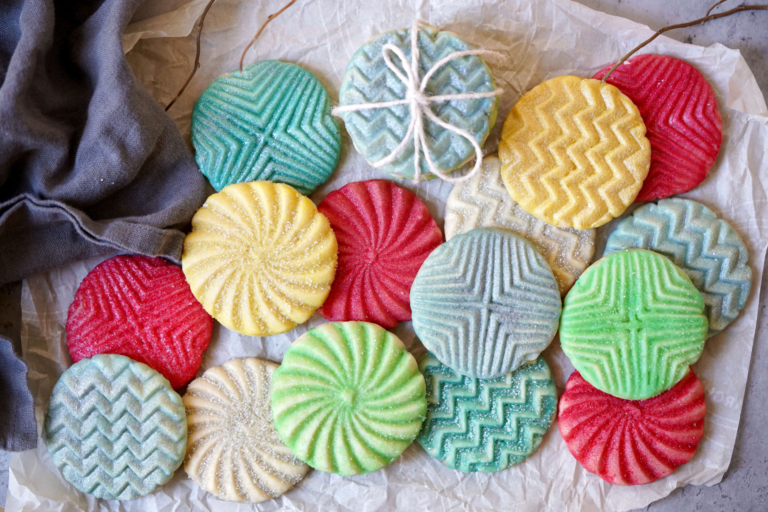
I am a self-proclaimed cookie lover and while I don’t discriminate, I have a weakness for sugar cookies the most. This year old-school holiday stamp cookies (aka, sugar cookies) are #1 on my holiday baking list. July 9th is National Sugar Cookie Day but I’m a bit perplexed by that. One would think any day in December would be more appropriate, considering the month-long cookie countdown till Christmas that occurs every year.
Sugar Cookies in History
A sugar cookie is a simple cookie, with the main ingredients being sugar, flour, butter, eggs, vanilla, and either baking powder or baking soda. Sugar cookies can be formed by hand, dropped, sliced, rolled, and cut into shapes or stamped. They are perhaps, the most versatile of all cookies out there. Most often, sugar cookies are decorated with additional sugar, icing, sprinkles, or a combination of these making them a welcome treat on just about any holiday.
American-style sugar cookies have been around since the early 1700’s, and are traceable to German Protestant settlers in Pennsylvania. Settlers created round, crumbly, butter cookies from basic ingredients that were easily shapable. These simple, yet irresistible cookies became an instant hit and remained a vital part of Pennsylvania’s history.
A Scandinavian Tradition
Historically, women in Scandinavian countries traditionally baked cookies for special occasions using carved stamps handed down from generation to generation of family bakers. It was customary to give decretive cakes and cookies to friends during the Christmas season, weddings, christenings, and other festive occasions. Some traditions never change. As a nod to history, the Nordiska Museum in Stockholm, Sweden has a collection of cookie stamps dating back to the 17th century in their permanent collection.
Rycraft
Eleanor Rycraft was the first American artist to introduce finely detailed, handmade-in-America terra cotta cookie stamps. Elenor and her husband, Carroll, started their company, Rycraft, in 1968. Eleanor patterned her ceramic cookie stamps in the manner of the antique wooden Scandinavian stamps handed down through generations. As a potter, Rycraft saw the possibility of using clay to make these cookie stamps using the designs made in the Scandinavian tradition.
When using any kind of cookie stamp, Rycraft, or otherwise, the cooking-making process remains the same. The dough is rolled into small balls and coated in sugar before being stamped with the desired design.
I don’t use Rycraft stamps myself, I use Nordicware cookie stamps which are just as wonderful, and slightly less expensive. These special heavy-cast aluminum cookie stamps come in all sorts of designs, including holiday-specific ones. Plus all Nordicware stamp handles are made from sustainably sourced American hardwood.
The takeaway, these holiday stamp cookies are a wonderful way to make festive, traditional holiday cookies, effortlessly. And perhaps the best part is they take less time to make, but taste just as amazing, as cutout cookies.
Holiday Stamp Cookies
Ingredients:
For the Cookie Dough:
- 2 2/3 cups all-purpose flour
- 1 teaspoon baking powder
- 1/4 teaspoon kosher salt
- 1 cup unsalted butter, softened
- 1 cup packed brown sugar
- 1 egg
- 1 1/2 teaspoons vanilla extract
- 1 cup sugar (to roll the dough in)
For the Icing:
- 1 cup Confectioners' sugar
- 2 to 3 tablespoons milk
- 1/4 teaspoon vanilla extract (optional)
- Food coloring, for the glaze
- Sanding sugar and luster dust (optional)
Directions:
- In a medium bowl add the flour, baking powder, and salt, whisk to blend, and set aside.
- Using a kitchen mixer, such as a KitchenAid, fitted with a paddle attachment, add the butter and brown sugar and blend, on medium-high, until light and fluffy. Reduce the speed to low and add the egg and vanilla extract, blend well. Slowly, add the flour in two batches, mixing just until combined.
- Next, divide the dough in half and shape each piece into a flat disk. Cover the disks with plastic wrap, place them in the refrigerator, and chill for at least 2 hours (or overnight if desired).
- Once the dough has chilled, preheat the oven to 375 degrees F. Line two baking sheets with parchment paper and set near your workstation. Place the granulated sugar in a small mixing bowl near where you are working. Lightly oil the cookie stamps to prevent the dough from sticking. Note: Repeat this process as needed.
- Using your hands dive the dough into small 1-inch balls. Next, roll each dough ball in the sugar to coat. Working one at a time, press the ball with the desired cookie stamp until the dough reaches the edges of the stamp. Place the stamped dough onto the prepared baking sheet. Repeat with remaining dough balls.
- After you have filled a baking sheet, chill the unbaked stamped cookies for about 10 minutes. Once chilled, place the cookies in the oven and bake until lightly golden brown on the bottom, about 8 to 10 minutes.
- Remove the cookies from the oven and allow them to cool on a baking sheet for a few minutes before you transfer them to a baking rack to cool completely and/or decorate.
- For the Icing: Line two baking sheets with parchment paper and set them near your workstation. In a small bowl, add the confectioners' sugar, milk, and vanilla (if using) and whisk until smooth. Add just enough milk to make a thin glaze. Keep in mind, you do not want the icing to be too thick, so adjust the consistency as needed. Feel free to add colors to the glaze as desired.
- Gently dip the cooled cookies in the glaze, allowing any excess to drip off before placing it on the baking sheet. Alternatively, you can brush the glaze on cookies using a cookie decorating brush. Decorating note: If you are using dusting sugar, sprinkle on the cookies before they fully dry. If you are using luster dust, apply with a decorating brush once the icing has fully dried.

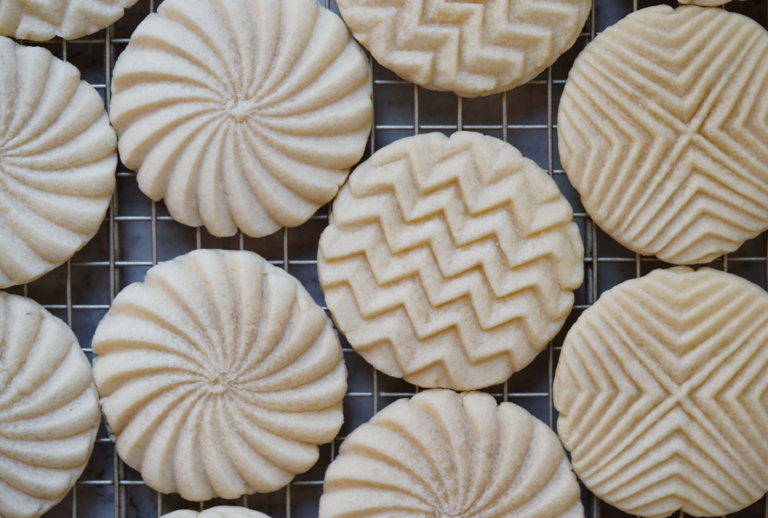
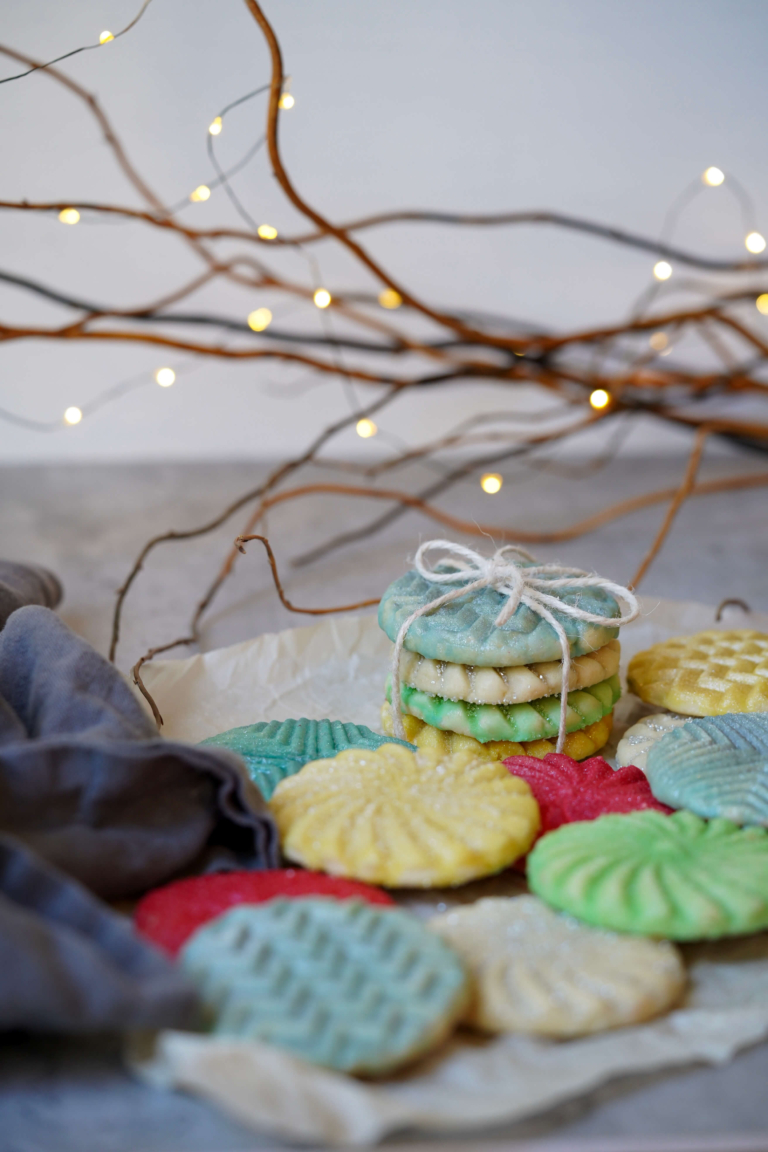
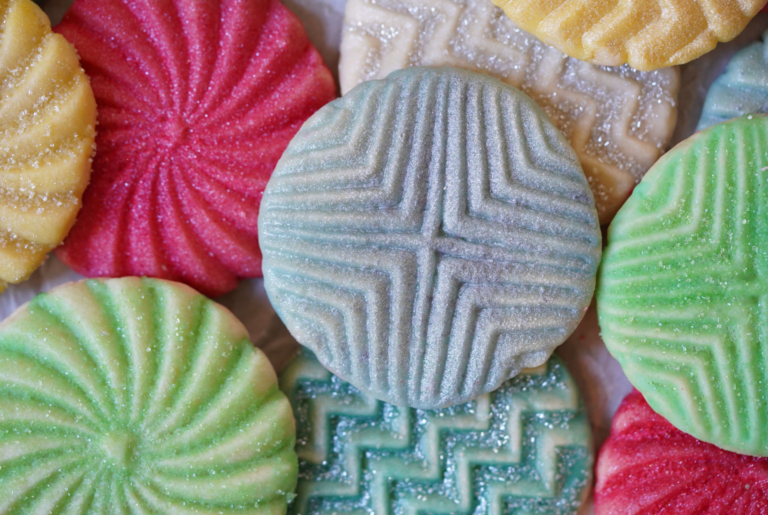
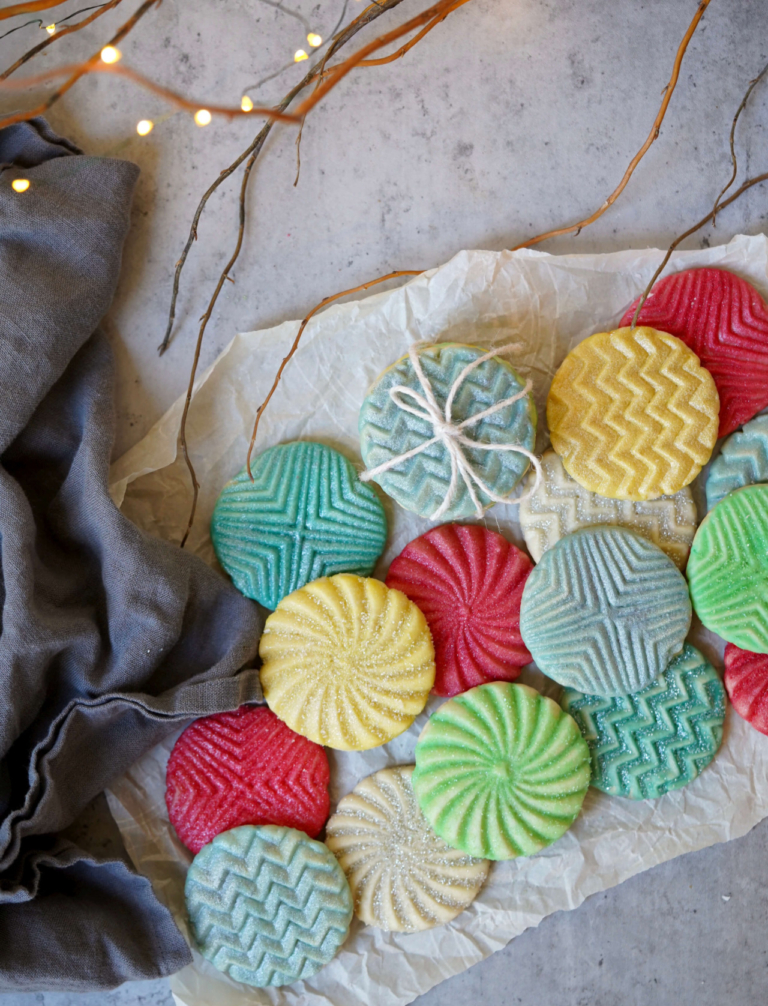
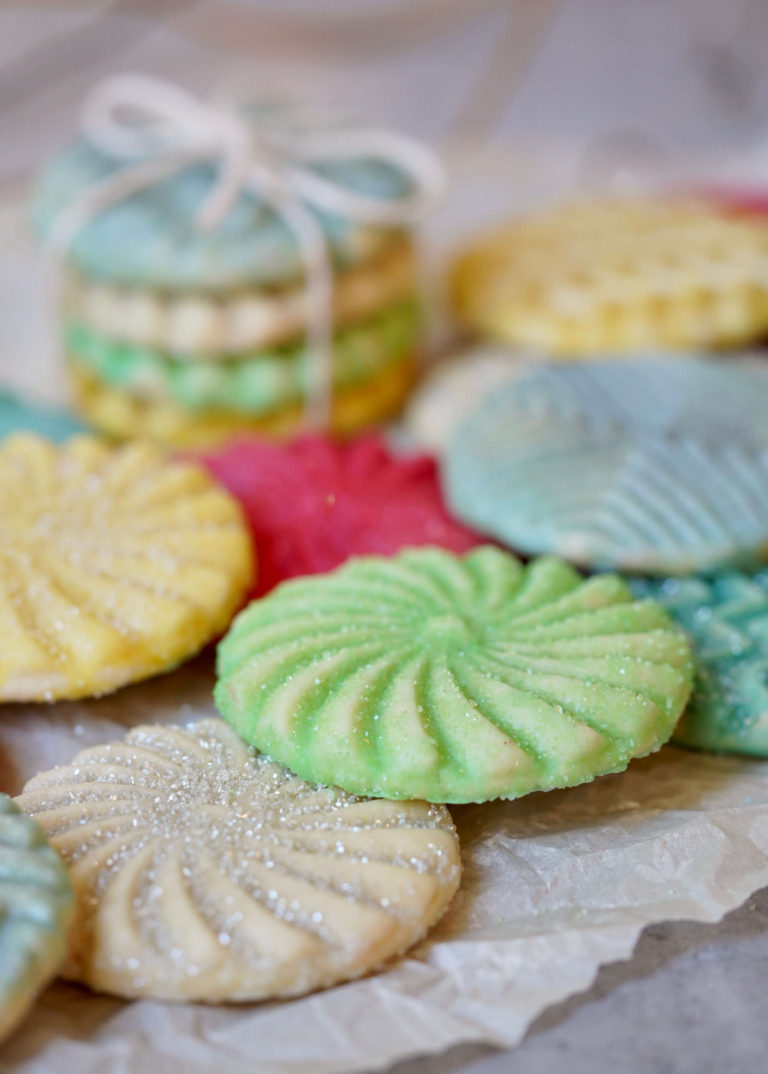



So in the pics these cookies get their color from the glaze not the dough?
Hi Tara, Thanks for reaching out. Yes, the color comes from the glaze, not the cookie dough itself. Happy baking!